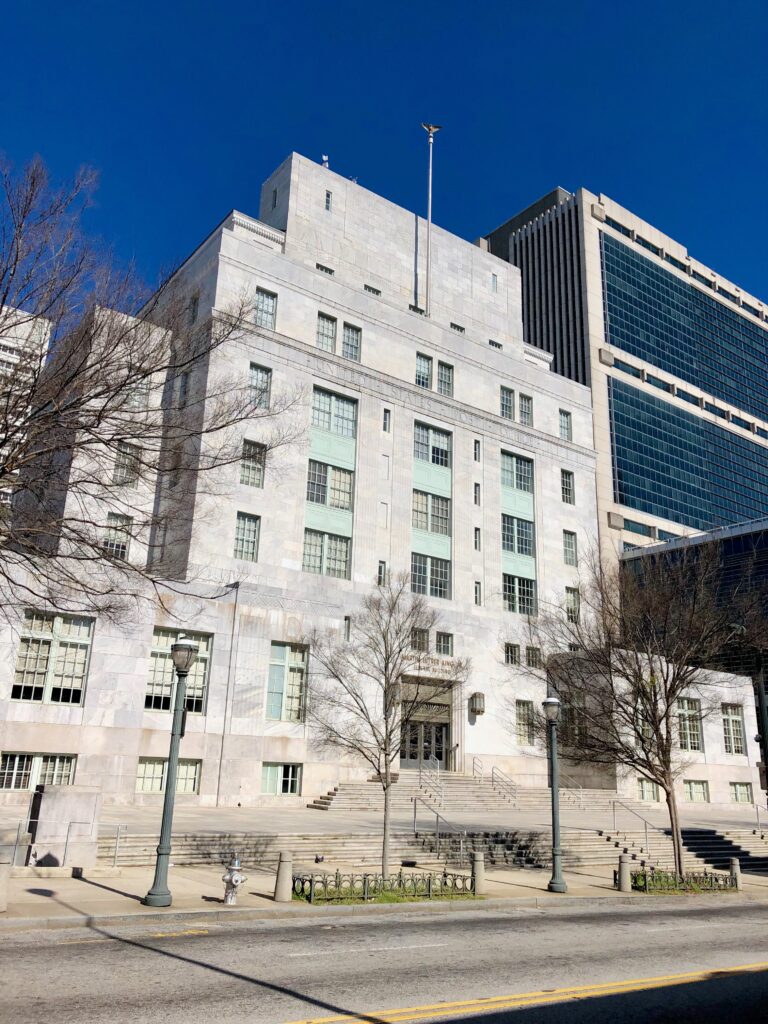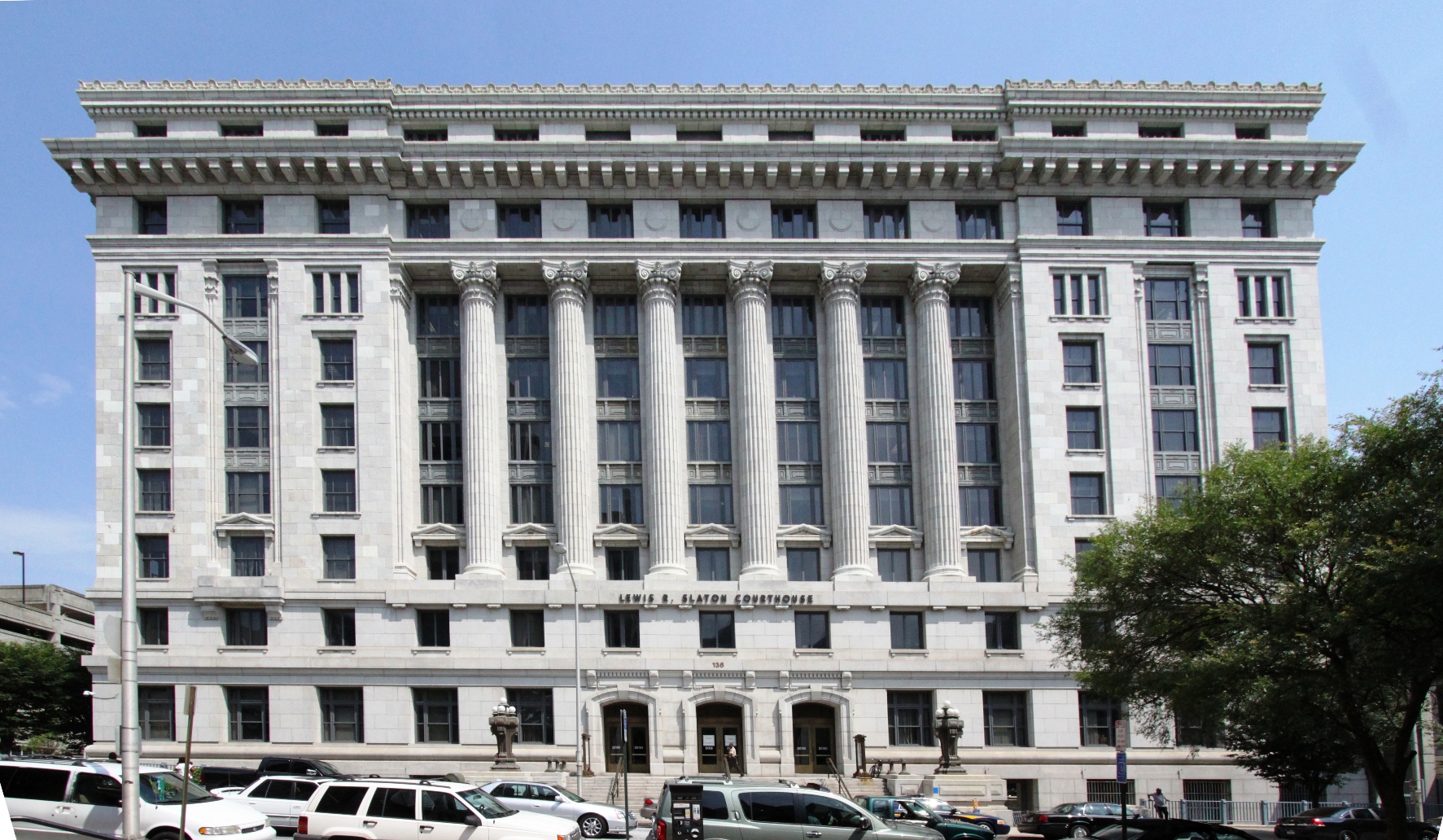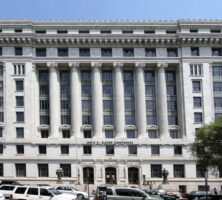A. Ten Eyck Brown was the prominent architect of public buildings in Atlanta for the first third of the twentieth century; he was rivaled only by Morgan and Dillon (later Morgan, Dillon, and Lewis). Brown built county courthouses in Spalding (1911, destroyed by fire), Fulton (1911-14, with Morgan and Dillon), Clarke (1914), and Cherokee (1926) counties. During the mid-1920s, as supervising architect for a group of Italian Romanesque revival public school buildings in Atlanta, he collaborated with the best Atlanta firms of the decade and produced some of the finest public school architecture in the region. His rejected design (1925) for Atlanta City Hall, a classical scheme he styled to be compatible with the adjacent Fulton County Courthouse, became the basis for his executed Dade County Courthouse in Miami (1925-28), built with August Geiger, for $4 million. Practicing out of Atlanta, Brown had branch offices in Jacksonville, Florida, where he built the Old Federal Reserve Bank Building (1923-24) with Henrietta Dozier, associate and supervising architect, and in Spartanburg, South Carolina.
Education and Early Career
Albert Anthony Ten Eyck Brown was born in 1878 in Albany, New York, the son of an architect. He studied at the Academy of Design in New York, and worked in Washington, D.C., and New York before moving to Atlanta. In 1902 he married Amanda Pearce of Nashville, Tennessee. He collaborated with P. Thornton Marye o n St. Luke’s Episcopal Church in Atlanta (1906) and began to build houses in the developing suburbs of Ansley Park, where he lived, and Druid Hills during the 1910s.

Image from Warren LeMay
An interesting project of this period was Arlington Hall (1918-19), a reduced-scale replica of the Custis-Lee Mansion in Arlington, Virginia. Arlington Hall, in the Morningside area of Atlanta, was intended as part of the campus of Lanier University, an “all-southern” Baptist college. In 1921, when the college failed, the campus was bought by the Ku Klux Klan for its own university, a project that was soon abandoned. Arlington still stands, an unusual relic of Greek revival architecture in a garden suburb of Atlanta.
Work of the 1920s and 1930s
By 1924 Brown’s architectural practice was well established. He had completed a respectable number of Atlanta residences, apartment buildings, and commercial structures, including large banks (Federal Reserve Bank Building). His stone St. Anthony Church in West End, started in 1908, was completed in 1922-23, and his brick Municipal Market (1923) in the Sweet Auburn district remains a significant part of that business neighborhood.

Photograph by OZinOH
As the 1930s brought economic depression and a restrained aesthetic in building, Brown remained one of the most active architects in Atlanta. His Volunteer Building was an elegantly detailed modern classic office building defaced by Brutalist modernizing in the 1960s and torn down at century’s end. Brown’s Thornton Building (1932) remains as a reminder of his restrained classicism during the 1930s. At the State Highway Board Building of 1931, Brown set a pattern for stripped-down “Depression classical” government buildings. This style would characterize the subsequent state office buildings by A. Thomas Bradbury that were constructed around the state capitol throughout the 1950s.
Brown’s finest work of the 1930s, and the largest construction project in the city at the lowest ebb of the Great Depression, was the Federal Post Office Annex (1931-33; Alfredo Barili Jr. and W. Humphreys, associate architects), now the Martin Luther King Jr. Federal Building. The Post Office Annex effectively composes monumental masses, dramatic profiles, classical order, and delicate art deco ornament to create a masterpiece of modern classic architecture at the eve of the New Deal. One of Brown’s last projects was Clark Howell Homes (1939-41), a public housing estate for which he joined, as associate architect, the leading traditional designers of the city: Francis Smith, Ivey and Crook, and Hentz, Adler, and Shutze (with J. Warren Armistead).
Brown died in 1940, before the Clark Howell project was completed. He had maintained a conservative classicism throughout his career, moving from the elaborate Beaux-Arts classicism of his Fulton County Courthouse to the restrained modern classic of his Post Office Annex. On the basis of these two landmarks alone, Brown’s reputation would be secure.








